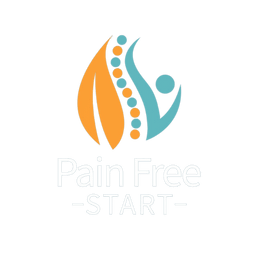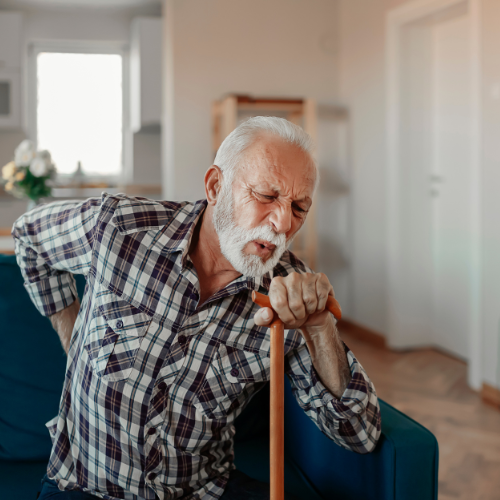Introduction
Living with spinal stenosis can be challenging, but managing pain effectively can significantly improve your quality of life. From medication to physiotherapy, and lifestyle changes to supportive footwear, a comprehensive approach is key. In this blog, we’ll explore a range of evidence-based strategies to help manage your pain and maintain your mobility. Whether you’re looking for exercises, ergonomic adjustments, or the best types of walking aids, we have solutions that can help.
Understanding Spinal Stenosis Pain
Spinal stenosis occurs when the spaces within your spine narrow, putting pressure on the nerves that travel through the spine. This can lead to symptoms such as pain, tingling, numbness, and weakness in the back, legs, and sometimes the arms. Most people find that their pain worsens with activities that involve standing or walking but improves when leaning forward or sitting down.
One of the most effective ways to manage spinal stenosis pain is by adopting a multidisciplinary approach—addressing the condition through a combination of physical therapy, exercise, lifestyle modifications, and, where necessary, medications or medical interventions.
Top Strategies for Managing Spinal Stenosis Pain
1. Prioritise Forward-Leaning Exercises
Many people with spinal stenosis find relief in positions that lean the body slightly forward. This reduces pressure on the compressed nerves and opens up the spinal canal. Here are a few exercises you can incorporate into your routine:
- Cycling: Both stationary and road cycling are effective as they keep you in a forward-leaning position, which reduces back pressure.
- Seated Stretches: Gentle seated stretches like forward bends can be done at home or at work to reduce tension in the spine.
- Walking with a Stick: Using a walking stick helps to naturally promote a forward-leaning posture, which can reduce discomfort during walks.
For more details on the best exercises, read our dedicated blog on spinal stenosis exercises.
2. Invest in Supportive Footwear
Choosing the right shoes is crucial in managing spinal stenosis pain. Unsupportive footwear can exacerbate pain by putting additional strain on your spine. Opt for shoes with:
- Good Arch Support: Helps to evenly distribute weight and reduce pressure on the lower back.
- Cushioning Soles: Reduces the impact on the spine when walking.
- Firm Heel Counters: Offers stability and support to the feet, reducing compensatory back pain.
Our detailed guide on the best shoes for spinal stenosis outlines which footwear features and shoes to look for.
3. Consider Physiotherapy
Physiotherapy is often recommended for spinal stenosis management and can include a combination of manual therapy, targeted exercises, and posture training. A physiotherapist will assess your symptoms and design a program tailored to your needs.
- Core Strengthening: A strong core reduces the strain on your spine and stabilises your back.
- Posture Adjustments: Learning how to maintain a slightly forward-leaning posture during daily activities can reduce pressure on the spinal nerves.
- Pain Relief Techniques: Your therapist may also introduce heat or cold therapy, TENS (transcutaneous electrical nerve stimulation), or hands-on techniques.
If you are keen to optimise your back function then take a look at my Pain Free Back Program. Or join me in my FREE masterclass and learn how best to manage your back.

LEARN MORE ABOUT HOW I CAN SUPPORT YOU, CLICK HERE.
4. Use a Walking Aid for Extra Support
Walking aids, such as canes, walking sticks, or rollators, can make a significant difference in managing spinal stenosis pain. These aids promote a forward-leaning posture, which opens up the spinal canal and helps reduce nerve compression.
- Canes: Ideal for mild symptoms, promoting balance and slight forward lean.
- Rollators: Offer a higher degree of support, allowing you to lean further forward and reduce strain.
- Walking Poles: Useful for outdoor walking and hiking, providing extra balance and encouraging a natural gait.
For more information, see our blog on how walking aids can help manage spinal stenosis pain.
5. Adjust Your Daily Routine and Ergonomics
Small changes in your daily routine can significantly impact your pain levels. Consider:
- Modifying Your Workspace: Use a sit-stand desk or adjustable chair with lumbar support to maintain a comfortable posture.
- Taking Breaks: Avoid prolonged standing or sitting; take breaks to move and stretch every 30 minutes.
- Using Cushions: Seat cushions can help maintain a forward-leaning posture, especially during long car rides or when seated at your desk.
6. Surgery Has Its Place.
Sometimes no matter what you do there is just not enough space for the nerves to function properly. In this instance, it’s time to talk about surgery to remove excess bone creating more room for the nerves. When I speak to patients about surgery the majority are very against it and very few see it as the life-changing procedure it can be. We do a lot of spinal surgery at the hospital where I work, it’s lovely chatting to people afterwards and seeing their usually immediate results which could be a reduction in pain, improved strength, the ability to stand upright or maybe improved balance and sensation. Surgery may not be appropriate for everyone but it may be worth investigating. For more information on surgery for spinal stenosis take a look at this blog.
UK-Based Research and Guidelines for Spinal Stenosis Pain Management
According to the National Institute for Health and Care Excellence (NICE), maintaining an active lifestyle and incorporating physical therapy are key components of spinal stenosis management. Versus Arthritis and Arthritis Research UK also recommend using supportive devices and footwear to enhance mobility and manage symptoms.
More Information
These blogs may help you further. Take a look and enjoy.
Best Exercises for Spinal Stenosis: Reduce Pain Through Exercise.
Surgery for Spinal Stenosis: When Is It the Right Choice?
The Best Shoes for Spinal Stenosis: How Footwear Can Help Ease Your Pain
How Walking Aids Can Help Spinal Stenosis Patients: Improve Mobility and Reduce Pain
Conclusion
Managing spinal stenosis pain is possible with a combination of targeted exercises, supportive footwear, physical therapy, and lifestyle adjustments. By adopting a comprehensive, holistic approach, you can reduce your pain and regain control over your daily activities. You can live well with spinal stenosis and hopefully, this blog has given you a great place to start.
Take care, Helen
Helen Manders BSc (Hons) MCSP HCPC
Chartered Physiotherapist Since 2001



